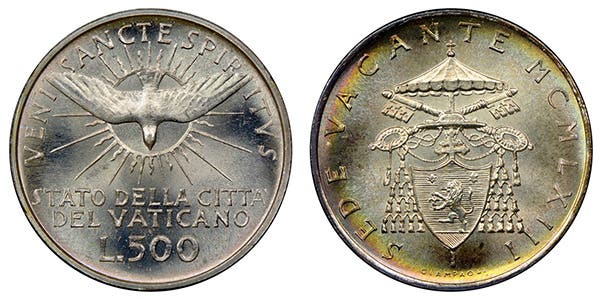Greece Extends Memorandum of Understanding
Can you claim something is your cultural patrimony when your country didn’t even exist at the time the artifact or coin was produced? This minor detail isn’t an issue for…
Can you claim something is your cultural patrimony when your country didn’t even exist at the time the artifact or coin was produced? This minor detail isn’t an issue for Greece, which has recently extended its agreement with the United States through a Memorandum of Understanding to cover relics, art, and coins dating from the fourth century A.D. to 1830.
According to a Sept. 22 U.S. Embassy and Consulate in Greece posting, “This renewal marks the 10th anniversary of the Memorandum of Understanding Concerning the Imposition of Import Restriction on Categories of Archaeological and Ethnological material of the Hellenic Republic and is an example of the United States’ enduring commitment to work with Greece to combat cultural property trafficking and to preserve heritage items. The agreement continues U.S. import restrictions on certain archaeological material originating in Greece ranging in date from approximately 20,000 B.C. to the 15th century A.D. The renewed MoU also extends import restrictions on ecclesiastical ethnological material ranging in date from approximately the 4th century A.D. to 1830.”
Modern Greece was established in 1830 as a result of the Greek War of Independence from the Ottoman Empire. Two years later Otto I, a Bavarian prince was crowned king. The Greek monarchy was overthrown by a military junta in 1967, which in turn transitioned to a democracy beginning in 1973.The monarchy was officially abolished through a referendum the following year.
The MoU that extends Greece’s claim on coins and artifacts covers the many periods in which Greece did not exist as a unified or as an independent nation.
Peter Tompa is a Washington attorney who has been involved in lobbying services relating to international trade, including the import of ancient coins. According to Tompa, “It [renewed MoU with Greece] was a bit of a surprise. We expect another one when there is an announcement of the import restrictions going with the renewed Egyptian MoU. That may be a bigger story in the larger world because it will probably include artifacts of the displaced Jewish minority.”
The other shoe appears to be ready to drop. According to the Dec. 1 issue of Mirage News, “Today, the United States and Egypt signed a new Memorandum of Understanding to continue the protection of Egypt’s cultural property for an additional five years…The new MoU supersedes an agreement signed in 2016 and expands protections to include additional categories of objects from Egypt.”
The article continues that the intent of the MoU is to “disrupt the trafficking of Egypt’s archaeological artifacts and cultural objects.” A description of the ‘additional categories of objects’ was not available at the time this article was being written.
Coin collectors can learn a lesson regarding ensuring they have a paper trail proving they have the legal right to own coins that may fall within these and other MoU the United States has with foreign countries. On Dec. 6 billionaire hedge fund manager Michael Steinhardt surrendered more than $70 million in undocumented antiquities to the office of New York’s Manhattan district attorney.
District Attorney Cyrus Vance Jr. described Steinhardt’s collection as origination “in the sprawling underworld of antiquities traffickers, crime bosses, money launderers, and tomb raiders he relied upon to expand his collection.”
Steinhardt’s attorneys Andrew J. Levander and Theodore V. Wells Jr. unsuccessfully argued that many of the dealers from whom Steinhardt bought the items “made specific representations as to the dealers’ lawful title to the items, and to their alleged provenance.”








